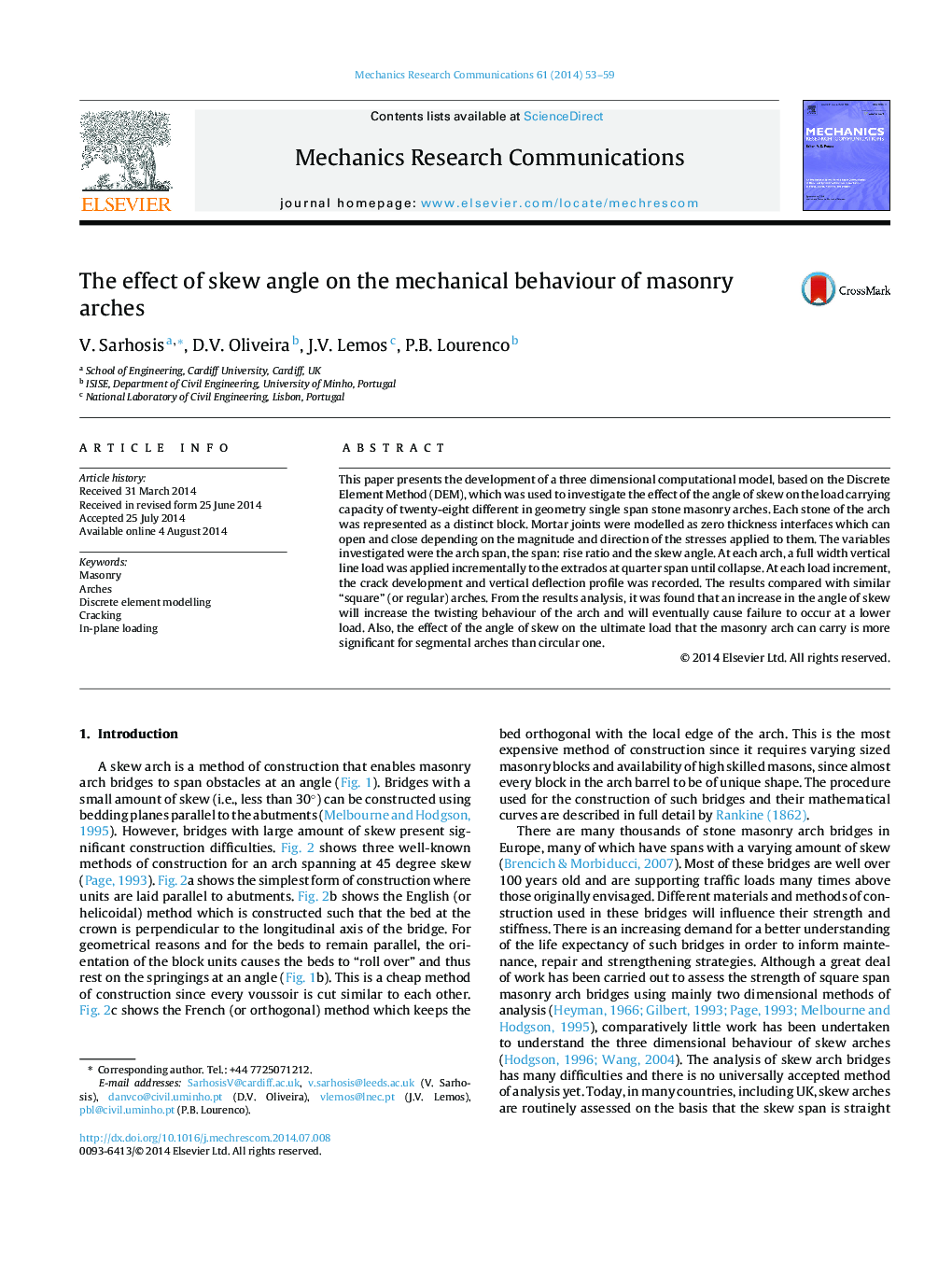| Article ID | Journal | Published Year | Pages | File Type |
|---|---|---|---|---|
| 801108 | Mechanics Research Communications | 2014 | 7 Pages |
•The effect of the angle of skew on the mechanical behaviour of twenty-eight arches investigated.•Using software based on the DEM, a series of computational models have been developed.•Computational results compared against the limit analysis method.•Each arch barrel failed by the development of a four-hinge mechanism.•An increase in the angle of skew will increase the twisting behaviour of the arch and will cause failure to occur at a lower load.
This paper presents the development of a three dimensional computational model, based on the Discrete Element Method (DEM), which was used to investigate the effect of the angle of skew on the load carrying capacity of twenty-eight different in geometry single span stone masonry arches. Each stone of the arch was represented as a distinct block. Mortar joints were modelled as zero thickness interfaces which can open and close depending on the magnitude and direction of the stresses applied to them. The variables investigated were the arch span, the span: rise ratio and the skew angle. At each arch, a full width vertical line load was applied incrementally to the extrados at quarter span until collapse. At each load increment, the crack development and vertical deflection profile was recorded. The results compared with similar “square” (or regular) arches. From the results analysis, it was found that an increase in the angle of skew will increase the twisting behaviour of the arch and will eventually cause failure to occur at a lower load. Also, the effect of the angle of skew on the ultimate load that the masonry arch can carry is more significant for segmental arches than circular one.
Graphical abstractFigure optionsDownload full-size imageDownload as PowerPoint slide
